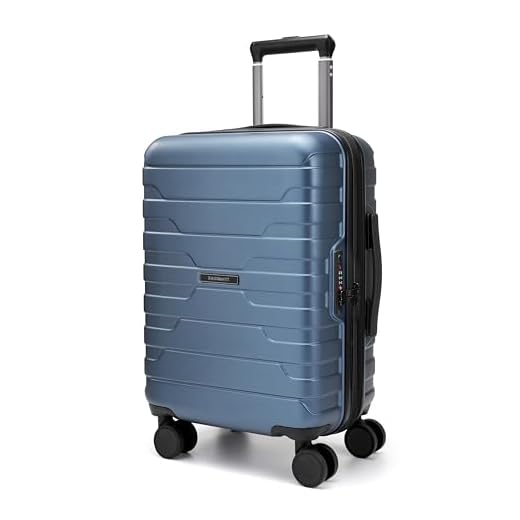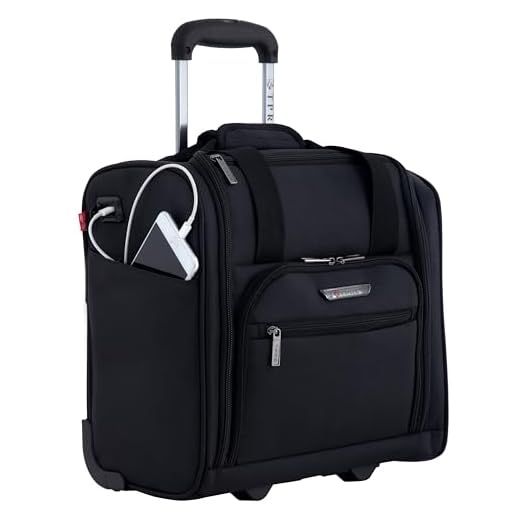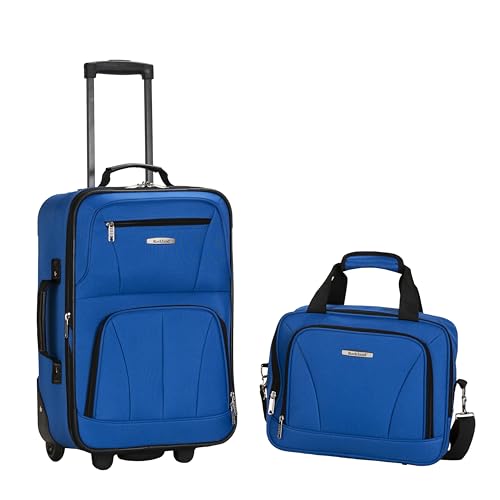



Short answer: Most U.S. ultra‑low‑cost operators treat a larger onboard bag as a paid extra; a small personal item that fits under the seat typically travels complimentary. Common dimension limits: personal item ≤ 18×14×8 in, cabin bag ≤ 22×18×10 in.
Typical fees: pre-purchase during booking $30–$45, online check-in $40–$55, at gate $60–$80. Gate-checked pieces may incur similar sums and can slow down arrival baggage handling. Buying the allowance when selecting seats saves the most.
Practical tips to avoid extra costs: carry only an under-seat compliant item; measure your item at home using a ruler or tape; choose a bundled fare that explicitly includes a cabin-sized bag; add the bag through the airline app or website well before departure to access the lowest price.
Policies differ by airline: some leisure operators include a standard cabin bag with mid-tier tickets but not with the most basic fares, while ultra‑low‑cost carriers usually list the larger onboard item as an optional paid add-on regardless of ticket class. Consult the airline’s official baggage policy page and fee calculator to view exact size limits and current prices prior to travel.
Cabin bag fees: two US low-cost carriers
Pack a small personal item that fits under the seat to avoid any airline fee; both ULCCs impose fees on overhead cabin bags unless included with upgraded fare bundles.
Florida-based ULCC (FLL): overhead cabin bag online add-ons typically $35–65; at airport or gate expect $65–85. Complimentary allowance: one personal item that must fit beneath the seat.
Midwest-based LCC (MSP): online overhead add-ons generally $30–60; at gate prices usually $50–70. Certain bundles and higher fare classes include overhead bin access without separate payment.
How to avoid extra fees
- Include an overhead bag during booking to lock a lower price; add-on rates rise at check-in and again at the gate.
- Measure items before travel; typical cabin size limit is 22 x 14 x 9 inches including handles and wheels.
- Use the airline app or website to add an item; online pre-purchase is often 30–50% cheaper than gate purchase.
- Compare bundle cost versus single add-on price when overhead bin access is needed; sometimes a bundle saves money on multiple trips.
- Keep one small personal item under the seat to avoid any additional fee completely.
Timing and common price ranges
Buy online during booking or within 24–48 hours after booking to secure the lowest rates. Typical ranges: online $30–65; airport/gate $50–85 depending on route and season. Airport kiosks often match gate pricing.
If overhead bin access matters, add the item while reserving or before online check-in; otherwise travel with an under-seat personal item to avoid fees.
ULCC A – which fares and purchase moments trigger overhead cabin bag fees and typical prices
Buy an overhead cabin bag at booking to lock the lowest price; fees rise significantly if added later at web check‑in, airport kiosks, or at the gate.
Fare inclusion summary: the absolute lowest fare (often called “Bare” or “Basic”) normally only permits one small personal item that fits under the seat; bundled or premium fare tiers and dedicated “bundle” products typically include one overhead cabin bag plus extras such as seat selection and a checked piece. Mid‑level fares occasionally include the overhead item, depending on route and promotion.
When you add a bag: at booking (cheapest) → after booking via “manage trip” (moderate) → online check‑in (higher) → airport kiosk (higher still) → gate (highest; sometimes denied and rebooked as checked). Typical price cadence for ULCC A on domestic U.S. routes: booking $35–$60; after booking $40–$80; web check‑in $45–$90; airport kiosk/gate $60–$150.
Alternate carrier (leisure ULCC) patterns: lowest fare only allows a personal item; higher fares or bundled packages include an overhead cabin bag. Typical price progression for this operator: booking $25–$50; after booking $30–$65; web check‑in $35–$75; gate $50–$100.
Practical recommendations: 1) Add the overhead item while completing reservation if you know you’ll need it. 2) Buy a bundle that includes the bag when you also want seat selection or a checked piece – bundles often lower the per‑item cost. 3) Join the airline’s paid loyalty/subscription plan if you fly several times a year; monthly/annual programs can reduce or eliminate per‑bag costs. 4) Measure bags to stay within “personal item” dimensions to avoid fees.
Expect variation by route, peak travel dates, and special promotions; use the carrier’s baggage price calculator at booking to see exact fares for your itinerary before checkout.
Airline ticket types, membership perks, and when a cabin bag incurs fees
Quick recommendation: purchase an upgraded fare or add a cabin bag during initial booking to keep out-of-pocket costs lowest.
Ticket tiers and included bag allowances
Most fares split into three practical tiers: Basic (lowest-priced), Standard (mid), and Premium (higher). Basic tickets typically include only a single personal item sized to fit under the seat; access to an overhead bin is not included. Standard fares usually include one overhead cabin bag plus standard seat selection; Premium fares add priority boarding, extra seat choice options, and often a checked-bag allowance. If you need overhead bin space, pick Standard or higher at booking rather than relying on add-ons later.
Membership plans and typical perks
Annual club or subscription options generally deliver these concrete benefits: waived or reduced fees on at least one overhead bag, expedited boarding, discounts on extra seats and checked bags, and occasional companion or priority check-in privileges. Annual prices commonly range between $80 and $150; users who fly 3–4 round trips annually and regularly use an overhead bag usually break even. When buying a plan, compare the included waived bag benefit against the single-trip overhead bag fee to confirm value.
Practical tip: if travel frequency is low but you want reduced per-flight bag costs, add the cabin bag at booking. Members obtain the deepest per-flight savings; non-members save modestly by adding the item online early rather than at the airport.
Fee timing and typical amounts: adding an overhead cabin bag during booking or more than 24–48 hours pre-departure typically costs about $30–$45. Adding during online check-in often rises to $35–$60. Purchasing at the gate or at the podium commonly jumps to $60–$100. First checked bag rates tend to sit in the $30–$45 band, second checked bag $40–$60. These ranges reflect common low-cost carrier practice; buying earlier reduces the price and avoids last-minute premium assessments.
Size and overweight rules: measurements that trigger fees (Airline A & Airline B)
Keep a single under-seat item at or below 18 x 14 x 8 in (46 x 35 x 20 cm) to avoid gate-assessed fees on Airline A; buy an overhead allowance online when planning an onboard stow bag larger than that.
Measurements that trigger gate-check or oversize assessments
- Airline A (ultra-low-cost, yellow livery)
- Under-seat item limit: 18 x 14 x 8 in (46 x 35 x 20 cm). Any item larger than this is treated as an overhead item and will require a paid allowance unless included in the booked bundle.
- Overhead stow limit typically accepted at gate: 22 x 18 x 10 in (56 x 46 x 25 cm). Items exceeding any single dimension risk gate-checking.
- Gate-check handling: items that do not fit the overhead sizer will be checked at the gate and assessed the carrier’s checked-bag rate; items whose combined linear dimensions exceed 62 in (158 cm) are classified as oversize and assessed the higher oversize fee.
- Actionable tip: measure width, height, depth including wheels and handles; if any dimension exceeds the overhead limit, pre-purchase an allowance during booking to avoid higher gate prices.
- Airline B (Midwest leisure carrier)
- Under-seat allowance commonly: 16 x 13 x 8 in (41 x 33 x 20 cm) on many fare types; some fare classes include an overhead stow item at no extra cost.
- Overhead allowance commonly accepted: 22 x 14 x 9 in (56 x 36 x 23 cm) when an onboard stow item is included or purchased. Exceeding these dims triggers gate-check and checked-bag pricing.
- Oversize threshold: combined linear dims over 62 in (158 cm) moves the piece into oversize category with a substantially higher fee and special handling requirements.
- Actionable tip: check ticket type to confirm whether an overhead slot is included; add a bag allowance during booking instead of waiting until boarding to reduce cost.
Overweight thresholds and practical recommendations
- Common overweight steps: most US operators apply stepped fees beginning near 40–50 lb (18–23 kg). Typical tiers seen across carriers: 41–50 lb and 51–70 lb, each with increasing penalties; extremely heavy pieces may be refused onboard.
- Onboard stow enforcement: gate agents may require any heavy or awkward piece to be checked; that process subjects the passenger to the checked-bag rate plus overweight/oversize surcharges when thresholds are exceeded.
- Practical checklist:
- Weigh packed items at home with wheels and handles attached.
- If weight approaches 40–50 lb, redistribute contents into a second bag or ship items ahead via parcel service to avoid multiple fees.
- Buy allowances online after measurement verification; online prices commonly run lower than gate-assessed prices.
How online check-in, kiosk, and gate payments differ for cabin-bag fees on both carriers
Purchase cabin-bag allowance at booking to minimize fees: Airline A (ultra-low-cost) typically $25–$45 when added during booking versus $60–$75 at the gate; Airline B (leisure carrier) typically $15–$35 booked versus $45–$55 at the gate.
Booking (during purchase): lowest published rates, immediate confirmation added to reservation, convenient for boarding and seat selection. Airline A: lowest bracket on basic fares; bundled bundles or membership programs may include a cabin bag. Airline B: cheaper on refundable or upgraded fares; some fare types already include the larger cabin case.
Web or mobile check-in (24–1 hours before flight): rates usually higher than booking but lower than airport. Airline A: +10–20% versus booking price; some desktop-only promos apply. Airline B: similar or slightly lower than kiosk pricing if added during mobile check-in window; loyalty status can reduce the fee.
Airport kiosk (self-service at terminal): fees typically align with online check-in or sit midway between web and gate amounts; kiosk card-processing and system rounding can increase totals by a few dollars. Expect longer transaction times and potential queues.
Gate (agent at departure gate): highest fee tier and the least flexible option. Airline A: steepest premium and stricter enforcement of size/weight rules, plus immediate requirement to gate-check or pay the higher fee. Airline B: gate fees also high but occasional agent discretion for borderline items.
| Purchase moment | Airline A (ULCC) typical fee | Airline B (leisure) typical fee | Practical difference |
|---|---|---|---|
| During booking | $25–$45 | $15–$35 | Lowest cost; added to PNR; avoids gate hassles |
| Web / mobile check-in (24–1 hr) | $35–$55 | $20–$40 | Mid-range cost; convenient if missed at booking |
| Airport kiosk | $40–$60 | $25–$45 | Similar to web price; possible small processing fees |
| Gate (agent) | $60–$75 | $45–$55 | Highest fee; risk of forced gate-check if oversized |
Actionable checklist: add cabin-bag to reservation during booking; confirm item is ticketed on boarding pass or bag tag; use mobile app to verify allowance 24 hours prior; bring a measuring tool to the gate to avoid surprises. Additional reference: which one of the following is composed of myosin protein.
Practical tactics to avoid or lower cabin-bag fees on low-cost US carriers
Buy a fare bundle that explicitly includes a full-size cabin bag at booking – this single move typically saves 30–70% compared with adding a bag at the kiosk or gate and prevents surprise costs.
Booking and pre-trip moves
Compare total trip cost: base fare + prebooked cabin bag versus higher add-on prices later; use the airline app or website during initial checkout where prepay rates are smallest. If round-trip, add the bag to the outbound reservation (most carriers apply the same rule on return and a round-trip add-on often costs less than two one-way purchases). Consider an annual membership or subscription plan if you fly >3 times per year – typical annual plans run $69–$99 and include at least one full-size cabin bag, which breaks even quickly versus per-flight add-ons.
Measure and weigh at home: aim for a personal-item under 18×14×8 in (45×35×20 cm) and a cabin bag under typical overhead dimensions; use a luggage scale – staying 1–2 lb under the published limit avoids overweight penalties that spike prices at check-in.
At airport and gate tactics
Check in online and pay for any bag as early as allowed (often cheapest within booking window or during web check-in). If you decide at the airport, pay at the kiosk rather than waiting at the gate: kiosk fees are usually lower than gate payments. If overhead bins are full, request a gate-check for a soft-sided bag; many agents accept gate-checked soft bags without imposing the higher gate fee that applies to last-minute paid add-ons.
Pack to qualify as a personal-item: use a slim backpack or tote that fits under the seat and move non-essentials to checked bags or shipping. Wear heavy layers and shoes on the plane instead of packing them. Use compression cubes and transfer bulky items into checked baggage purchased during booking rather than risking a gate surcharge.
Use payment and loyalty perks: a cobranded credit card or the carrier’s loyalty tier can include a cabin allowance or waived add-on; check if a one-time membership promo beats single-trip add-on costs. For international segments, verify the carrier’s cross-border bag policy during purchase – rules and permitted dimensions sometimes differ and can affect total cost.
Small but practical kit: carry a compact umbrella that fits under the seat, such as the best blade runner umbrella, and keep a lightweight, visible accessory like low-profile LED strips described in best lighting to add to outdoor umbrella to help identify your personal-item in crowded bin areas.









